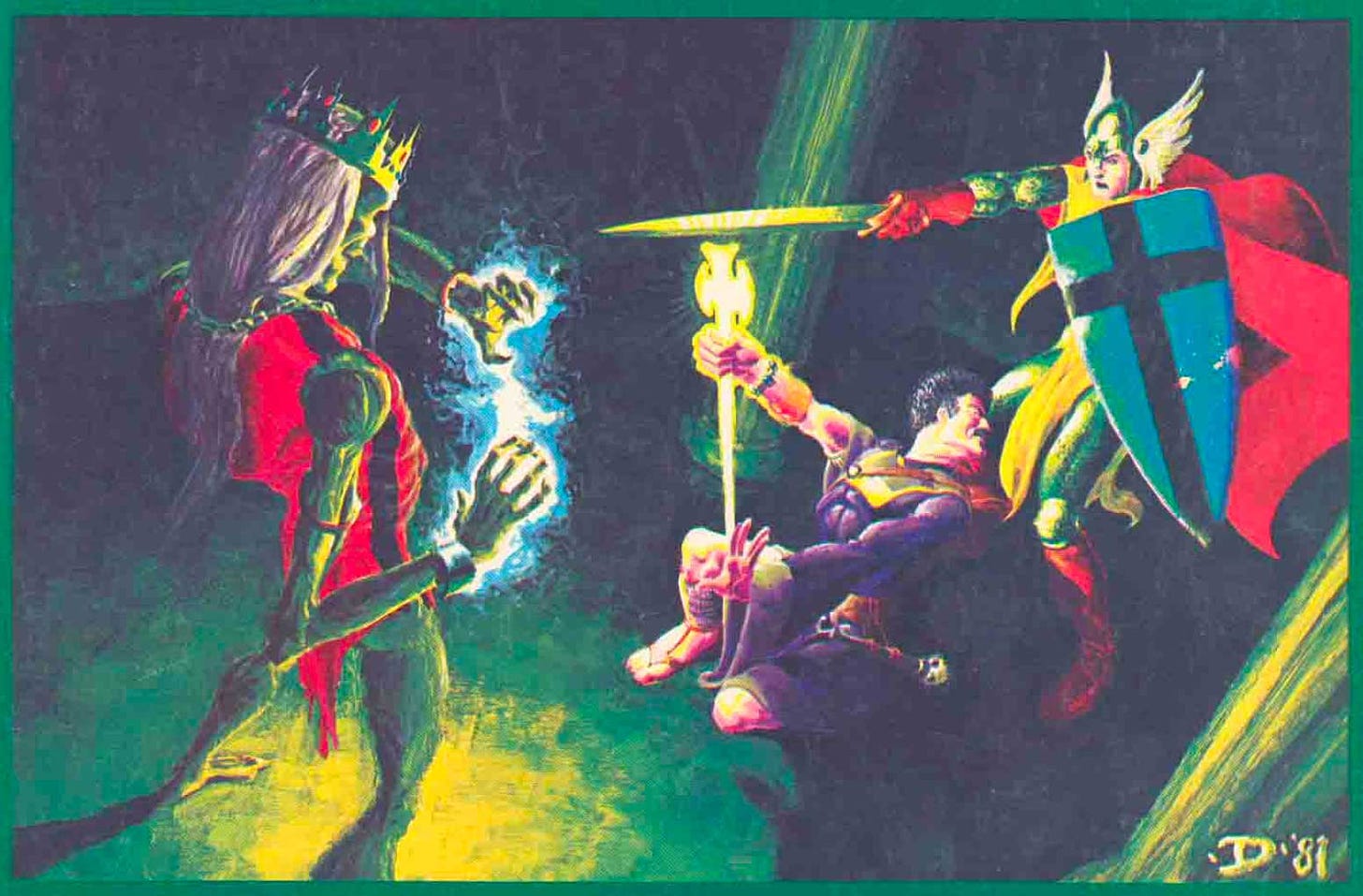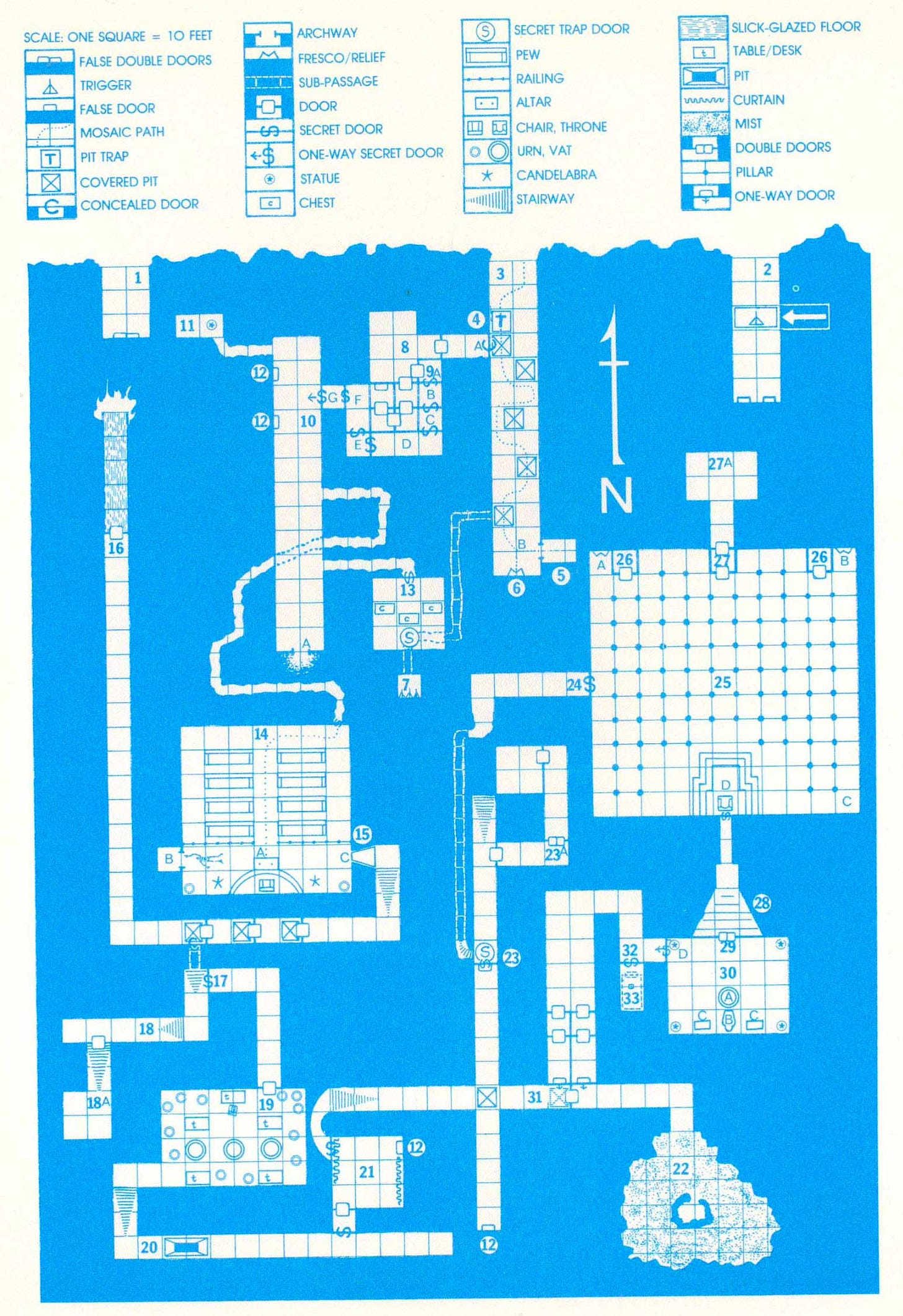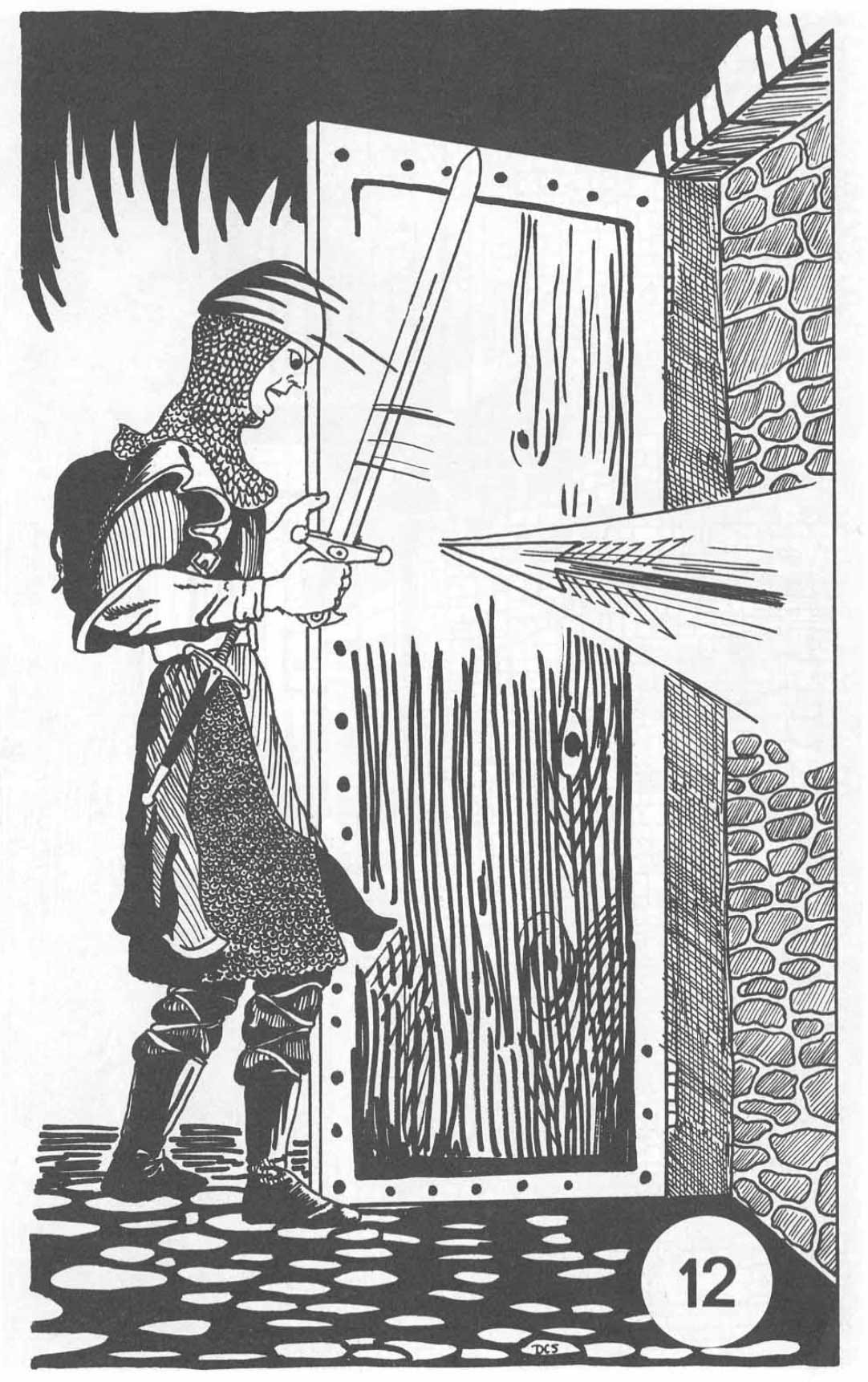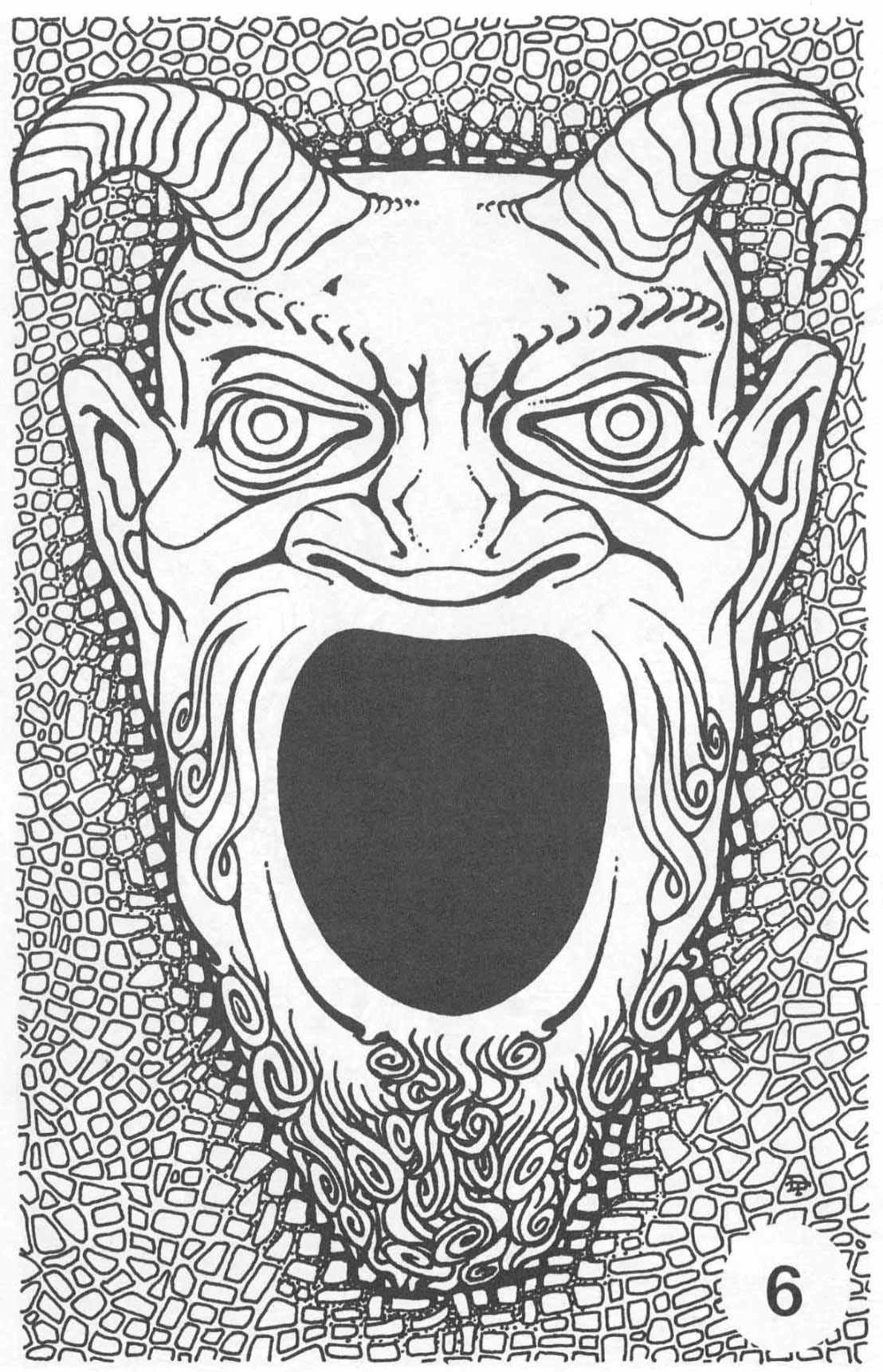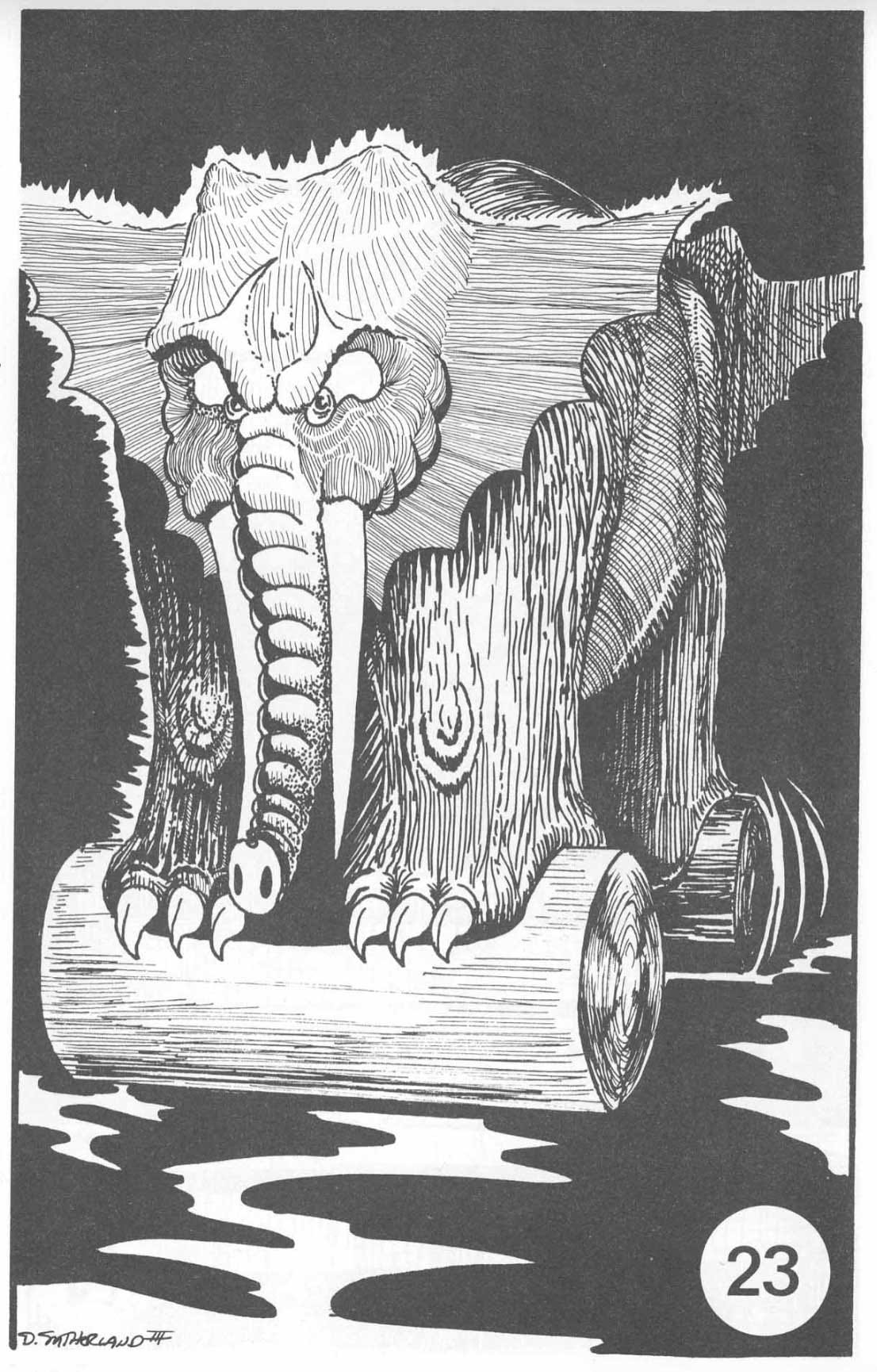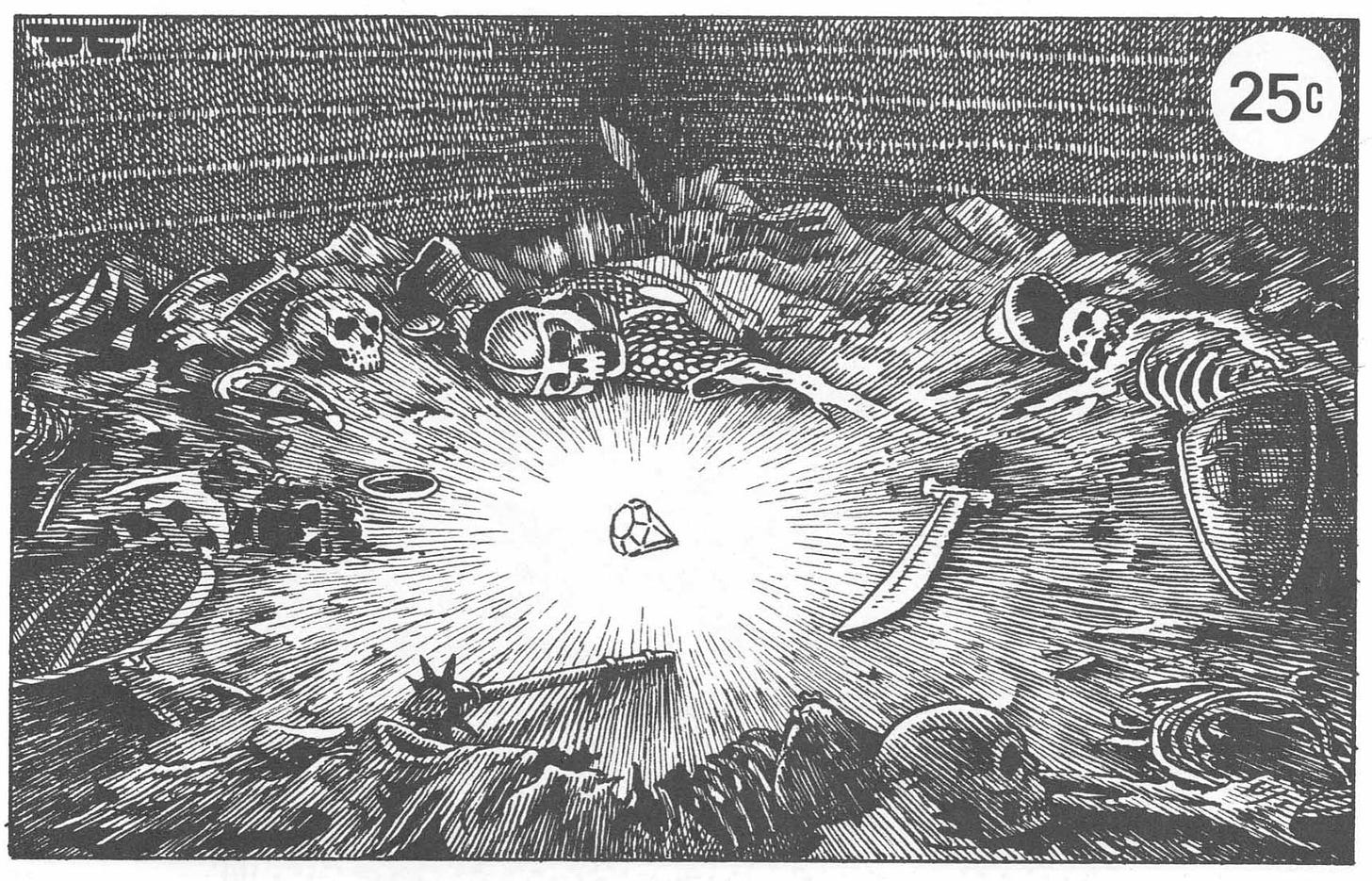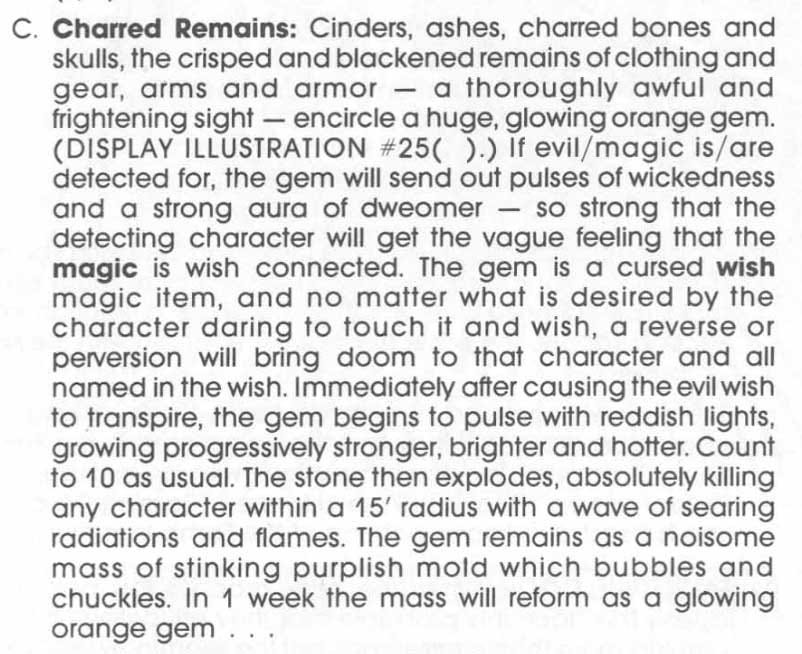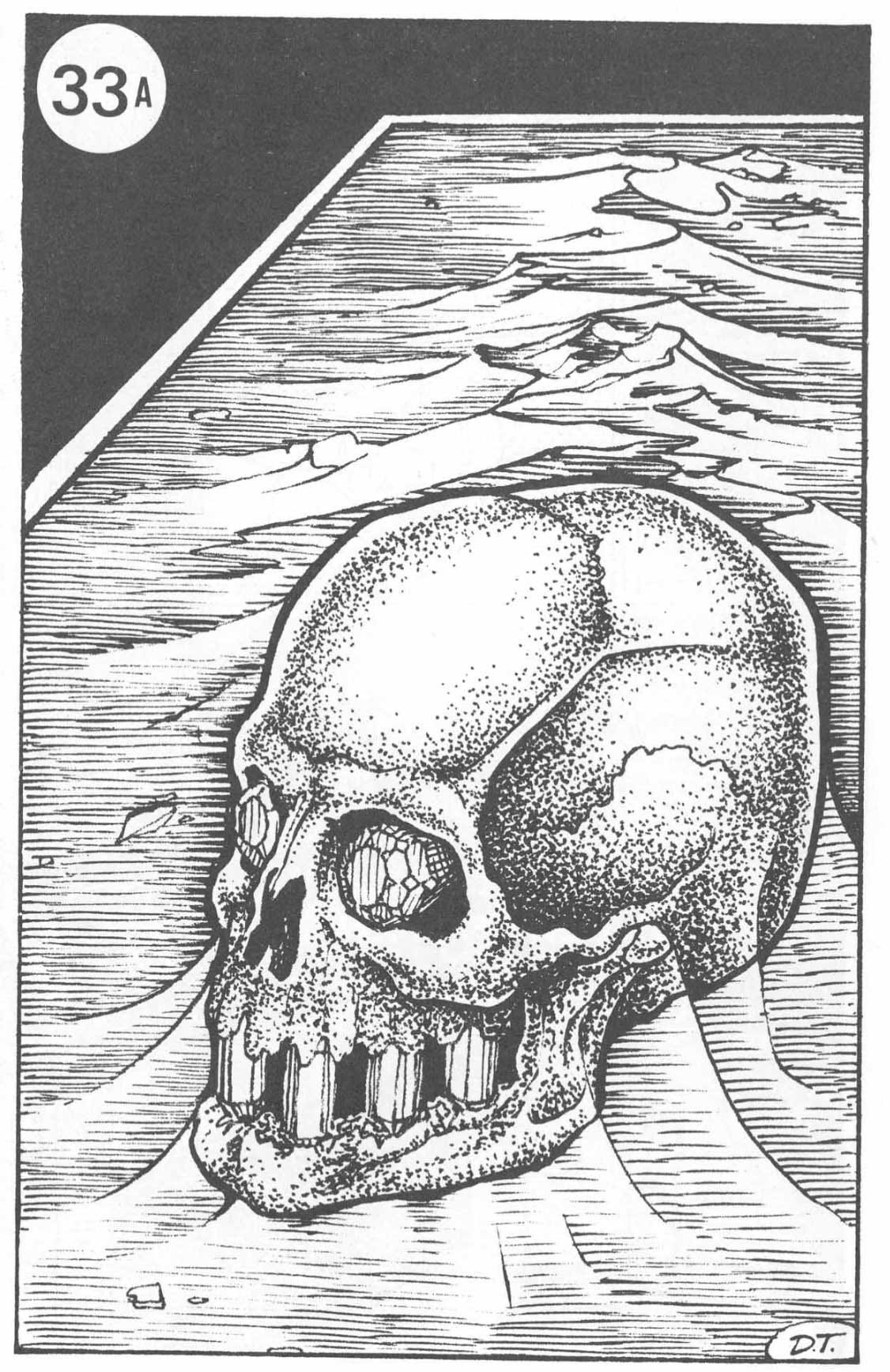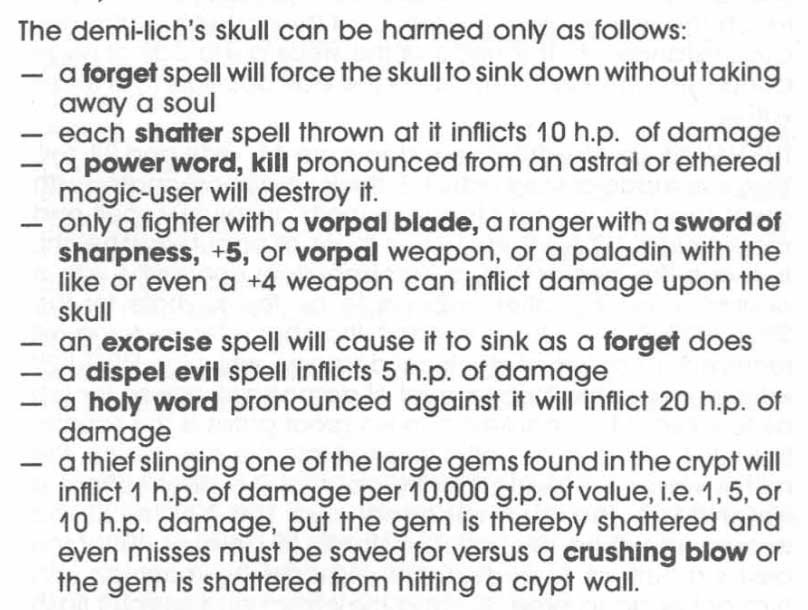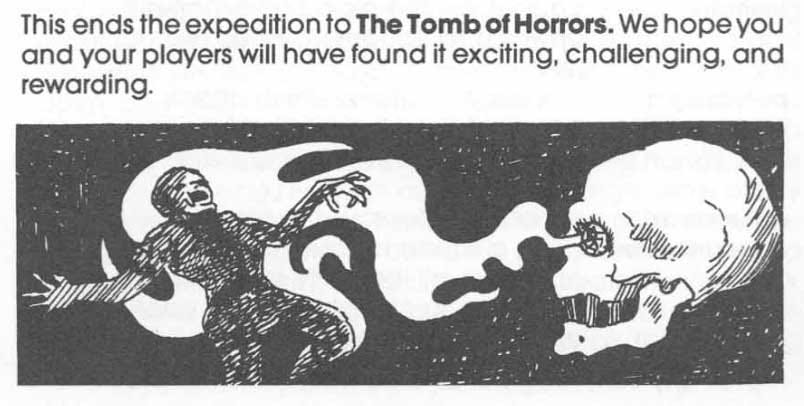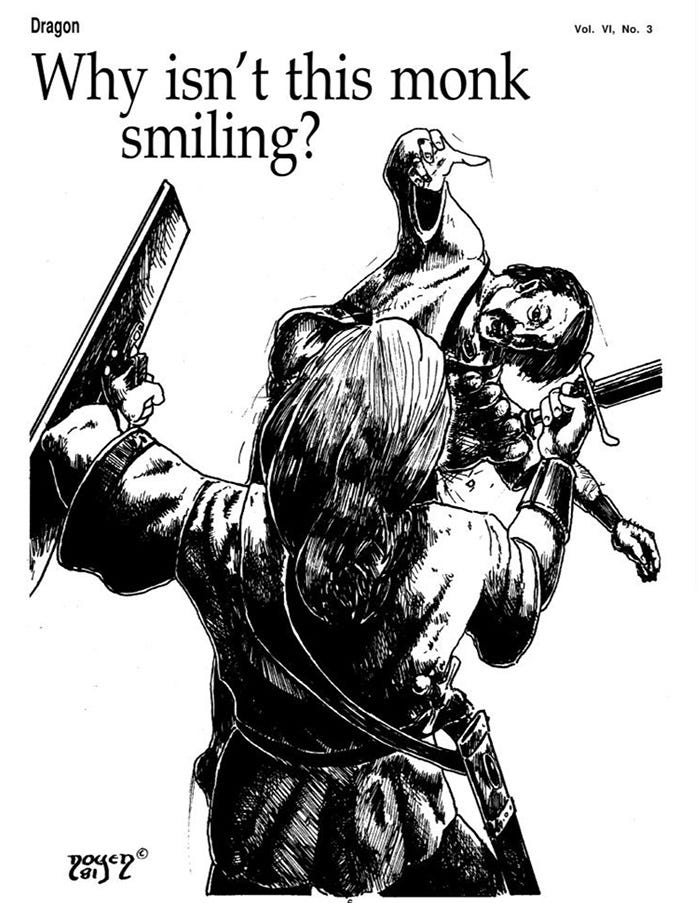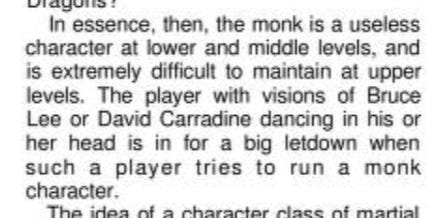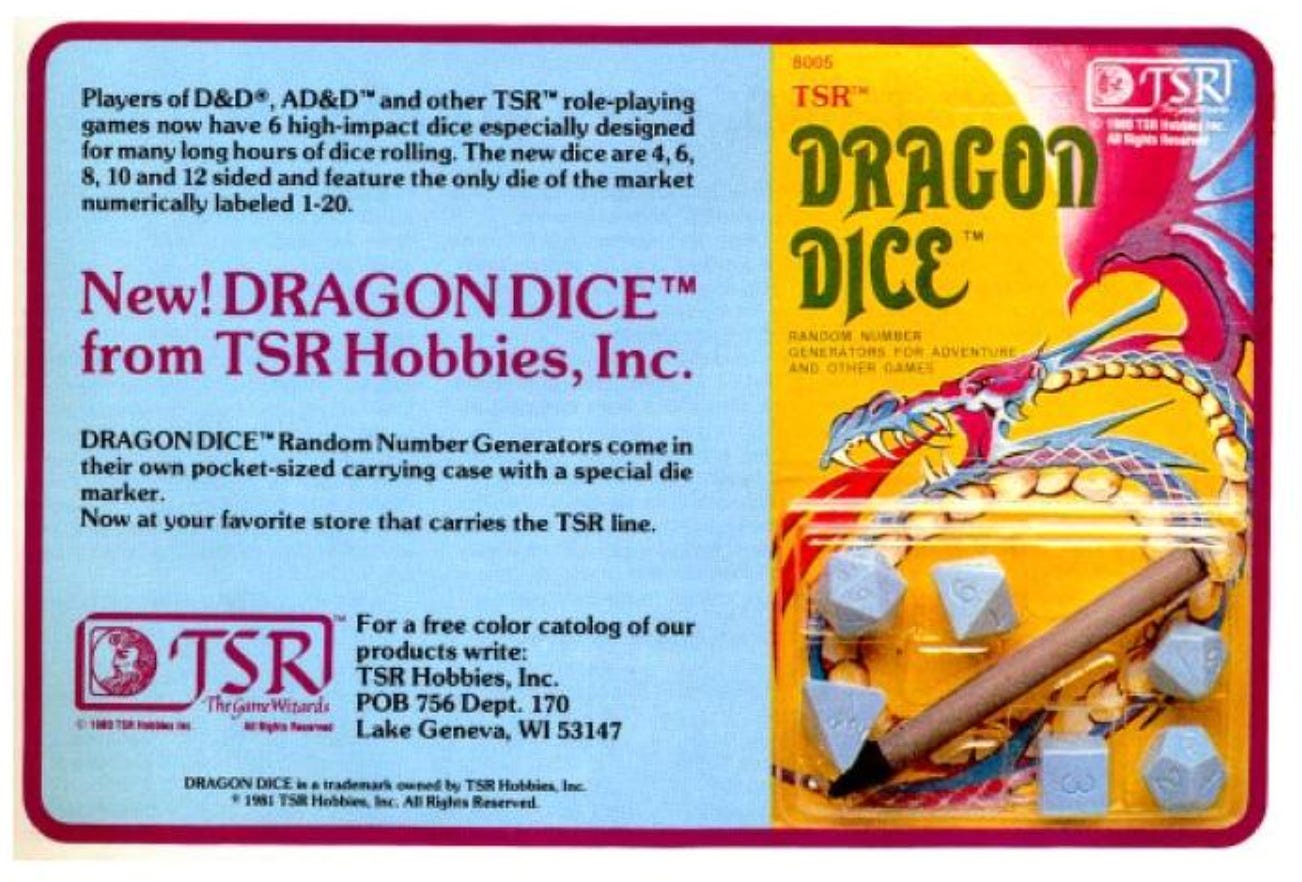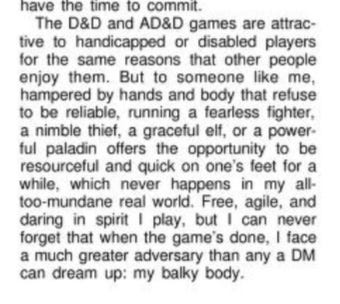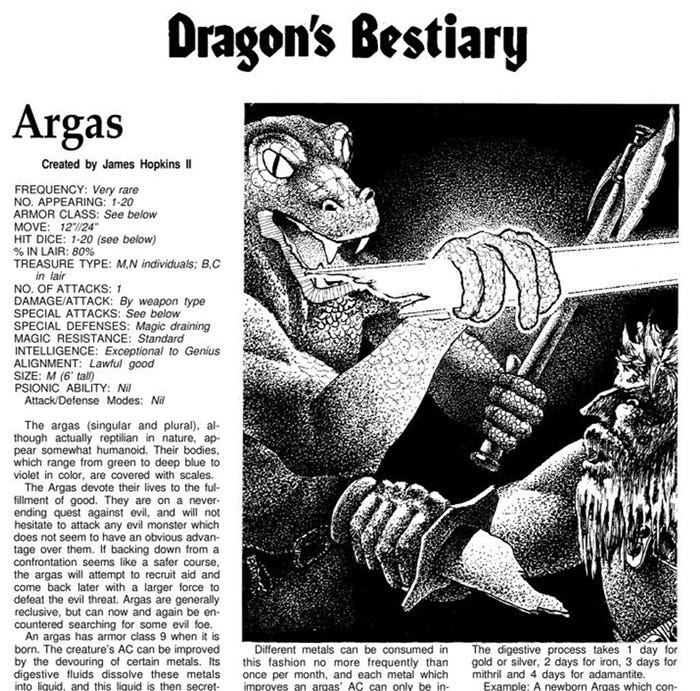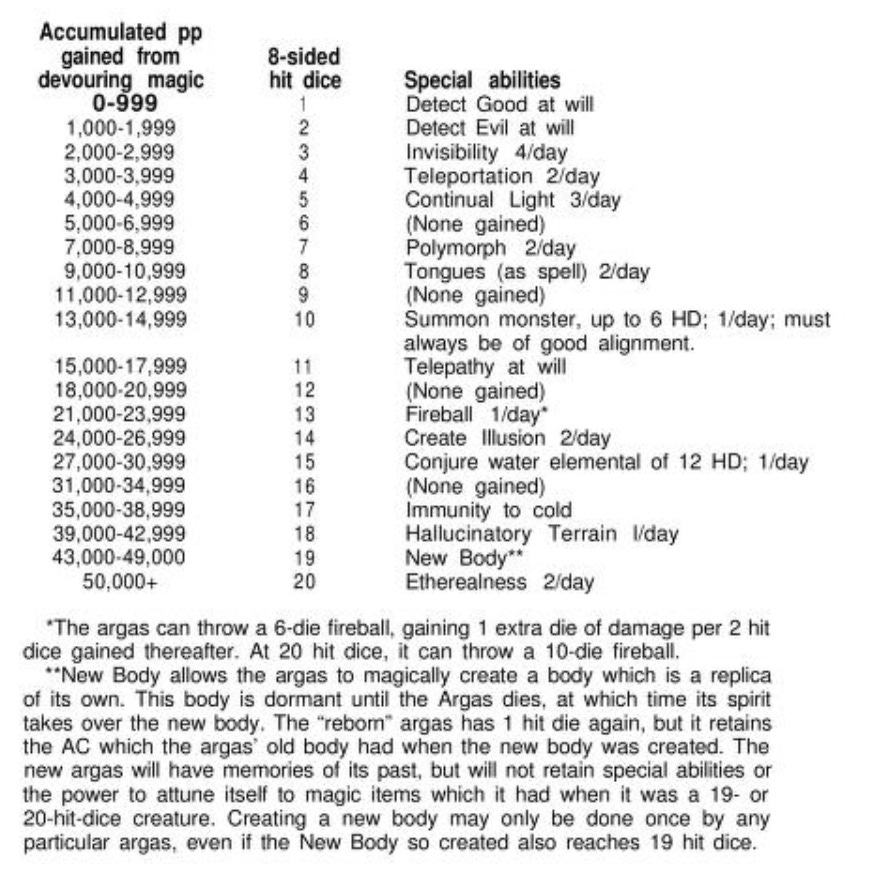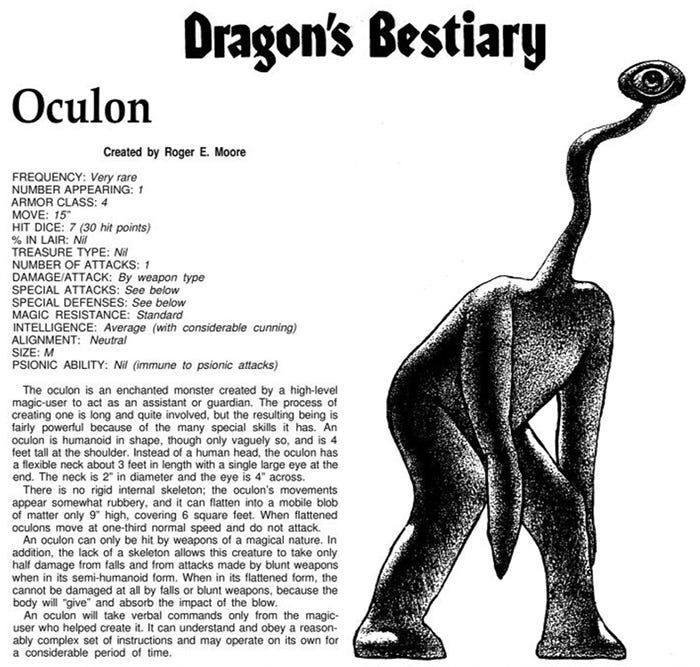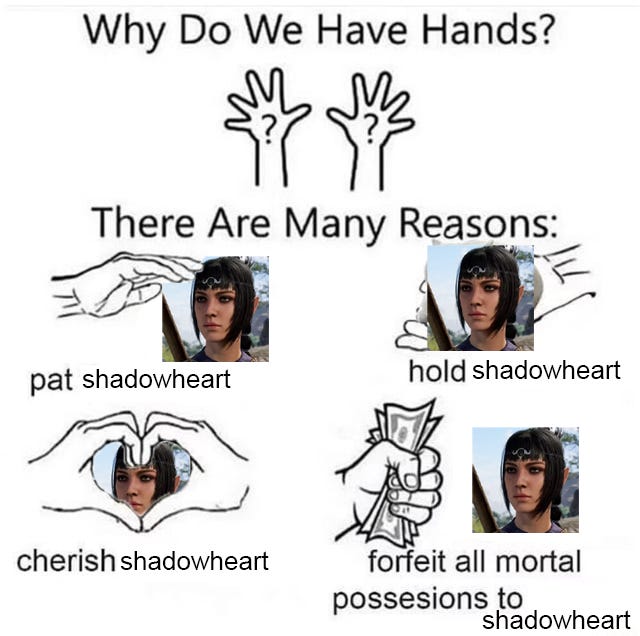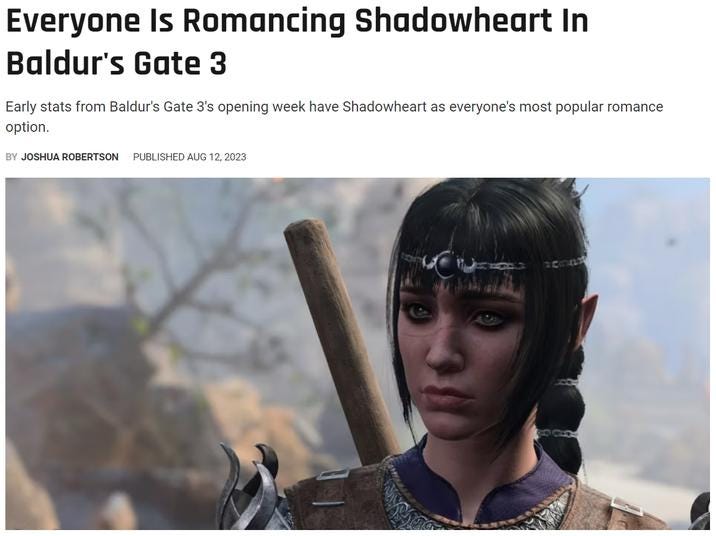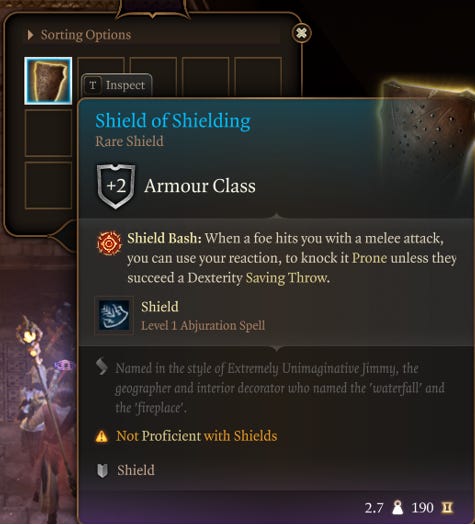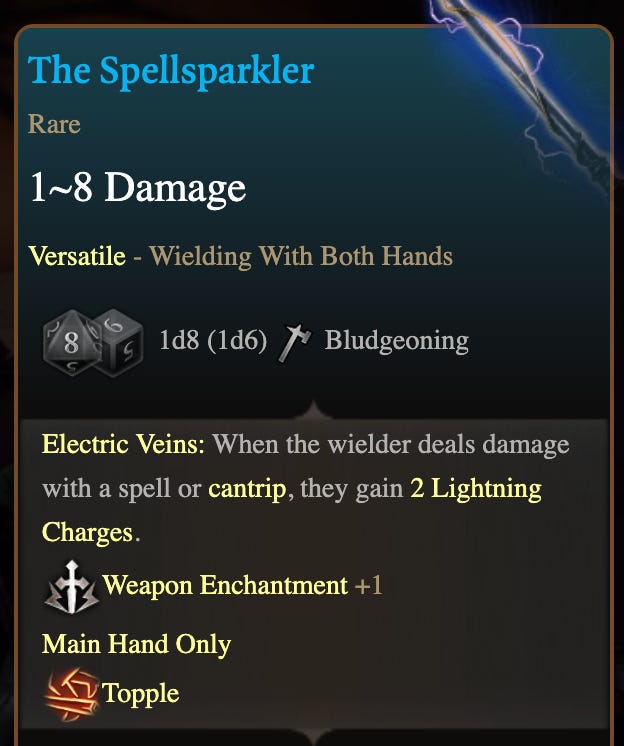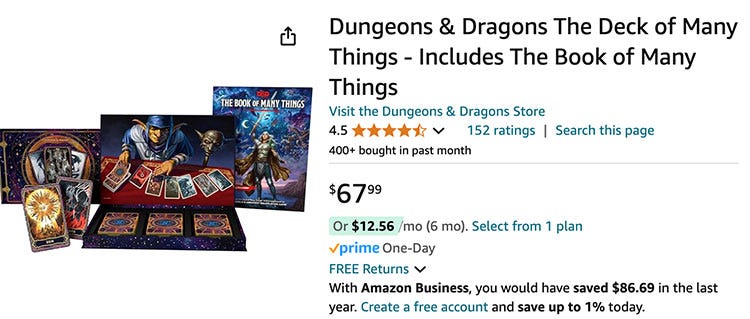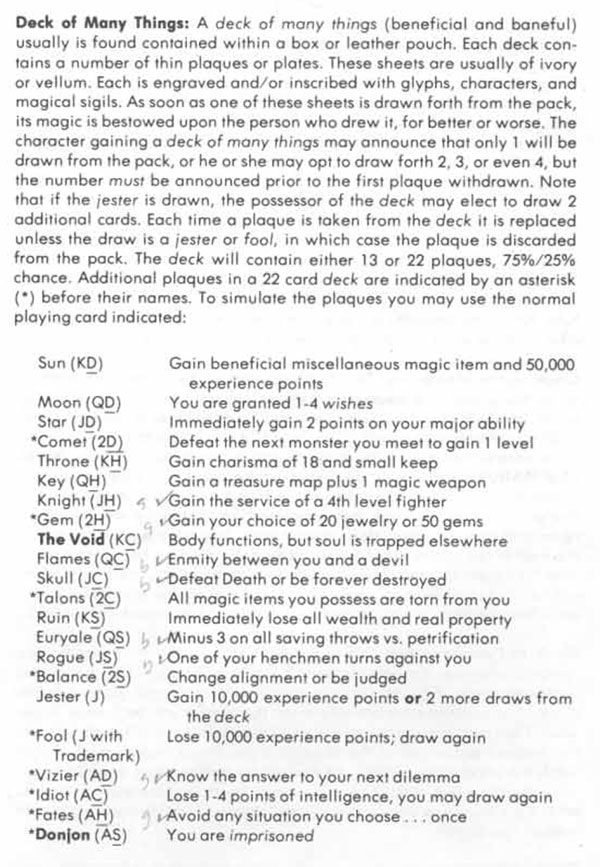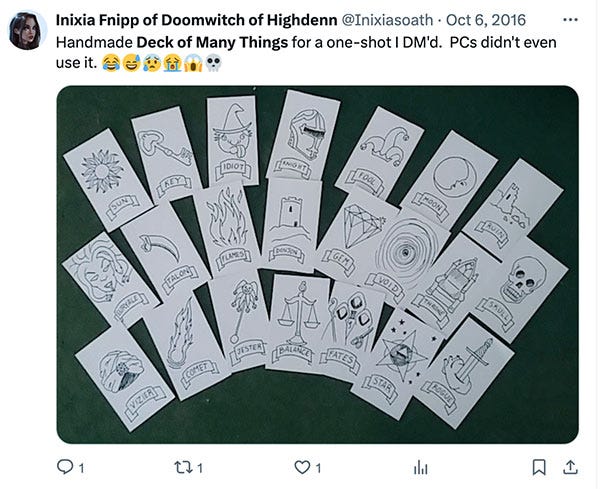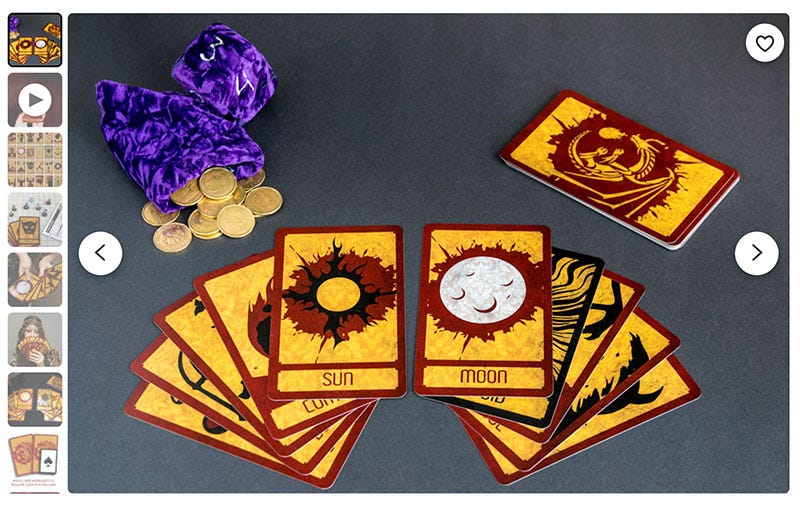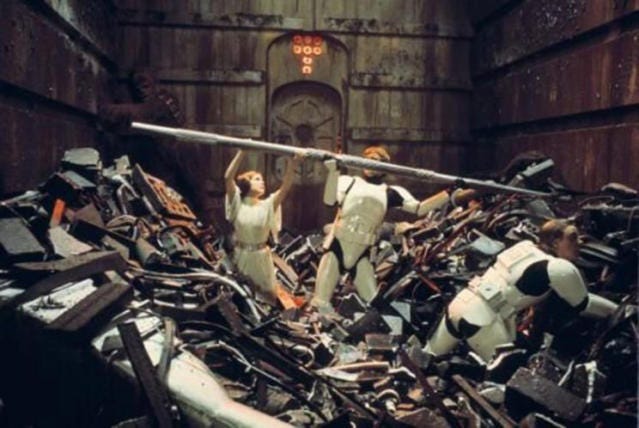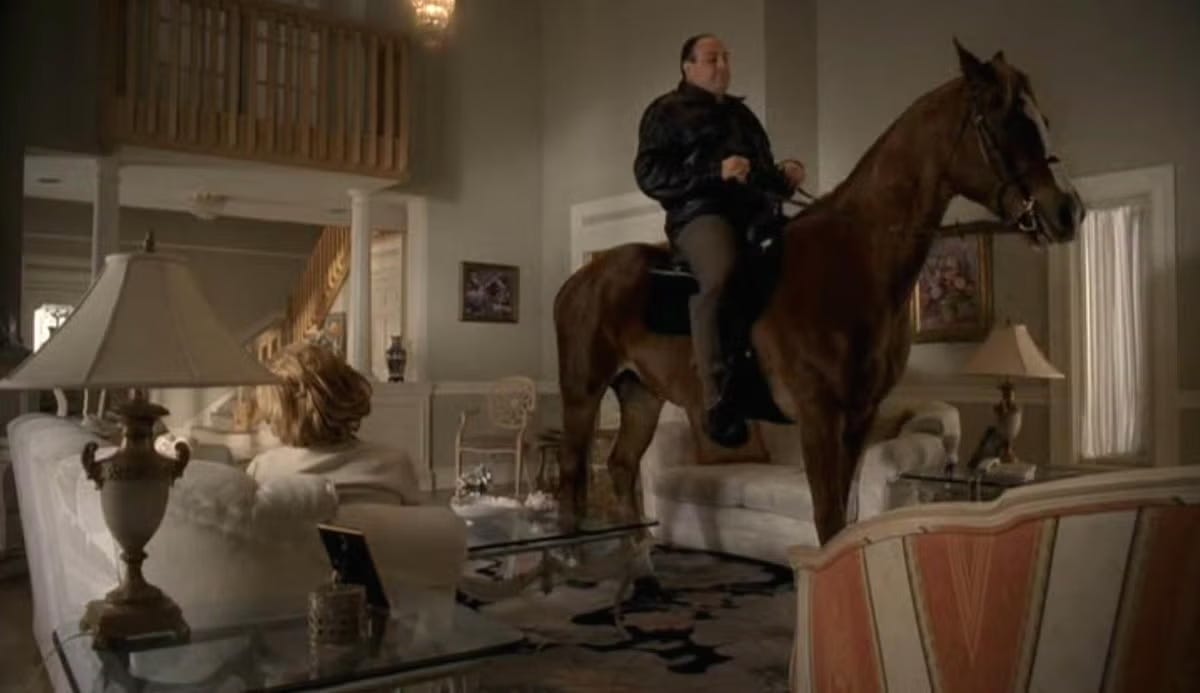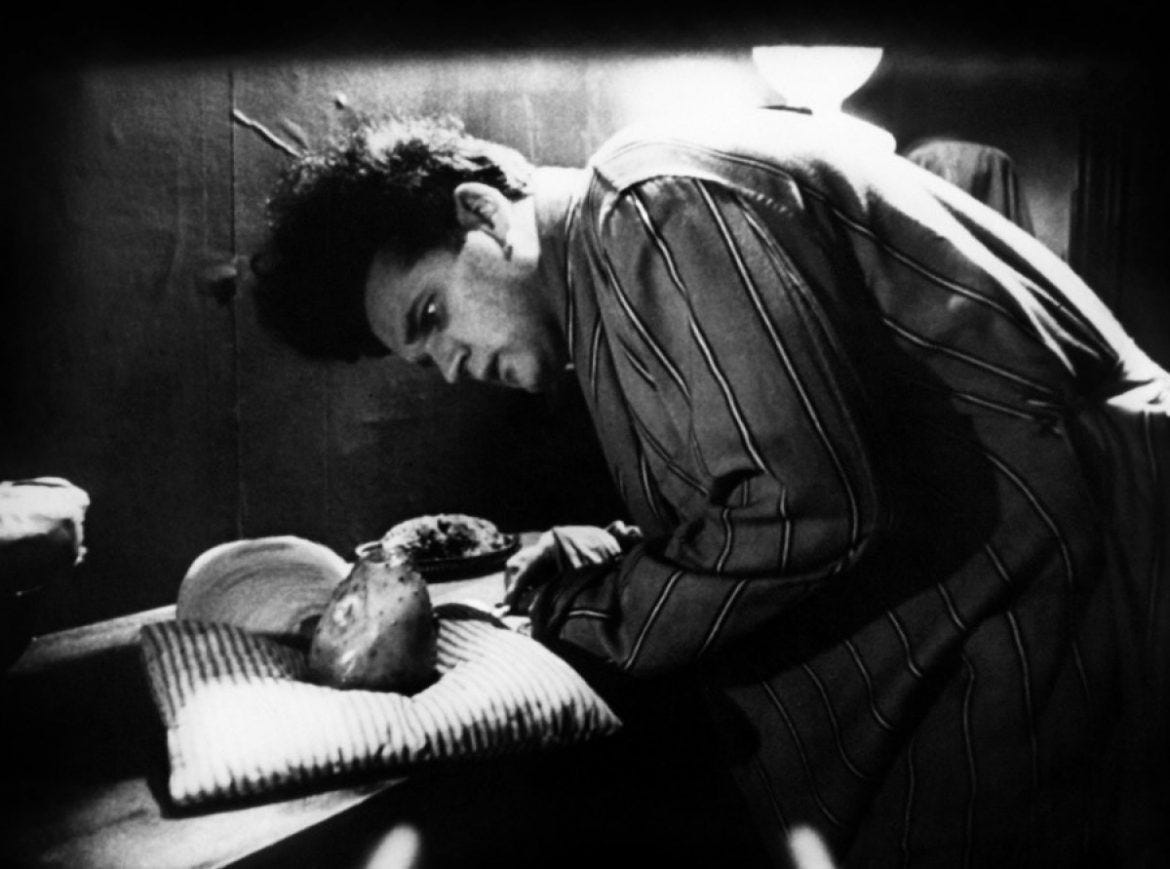- Joined
- Jan 28, 2011
- Messages
- 100,644















https://bottomfeeder.substack.com/p/gamer-deep-lore-exhibit-3-the-tomb
Gamer Deep Lore, Exhibit #3. The Tomb of Horrors.
Balancing turn-based RPGs is hard.
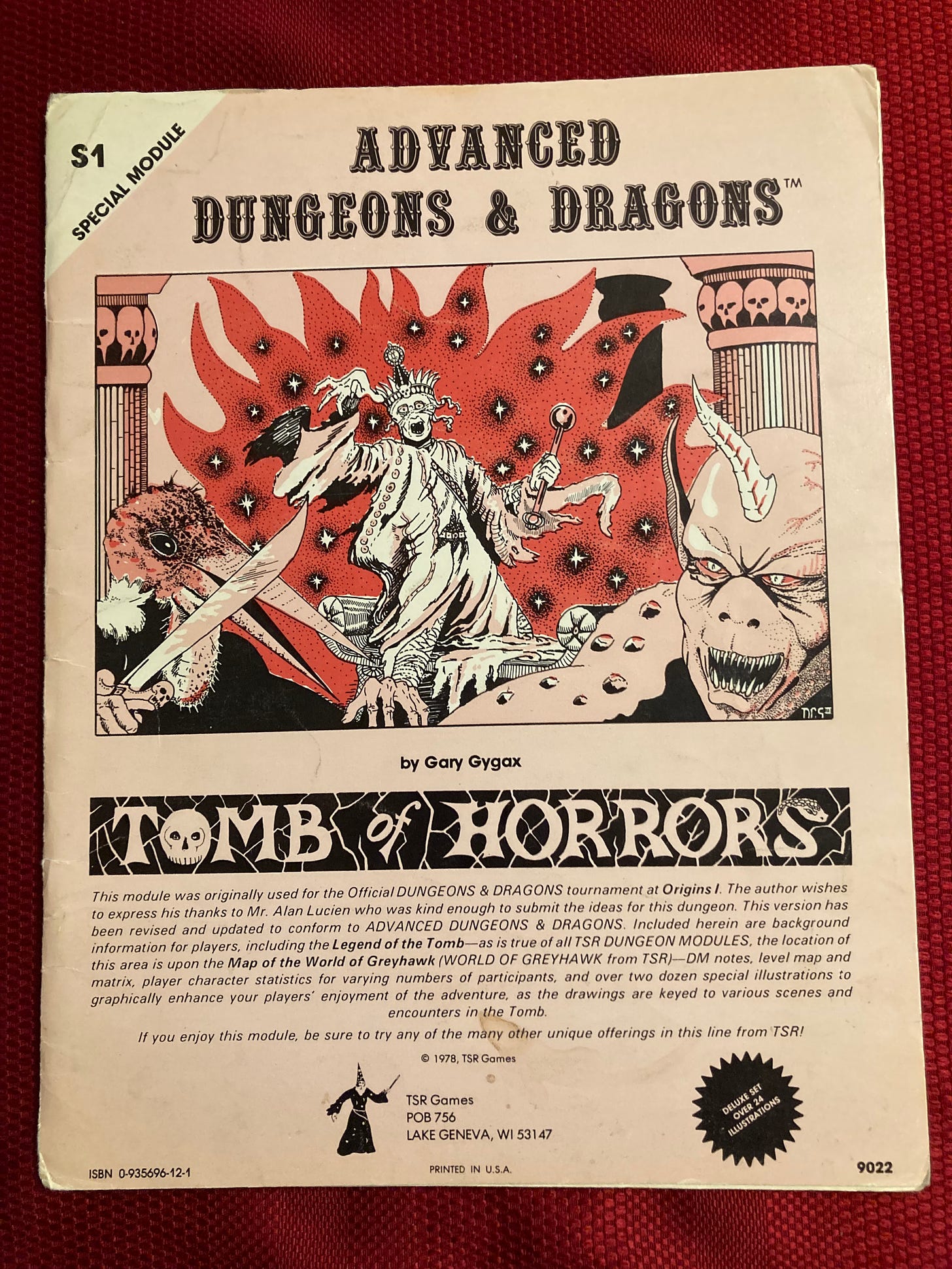
[/URL]
The first edition. My own personal copy. I was so disappointed when I realized that awesome bird dude isn’t in the adventure.
Second printing, with a color cover. Where’s mah bird dude?
The myth, the legend, the 1978 Dungeons & Dragons murderfest Tomb of Horrors. Famed for its difficulty, it was the most infamous of the early TSR Gary Gygax modules. It has its own Wikipedia page!
It was famously designed by Gygax to mess with the players in his own campaign and provide meat for players who came to him and said they could beat anything he threw at him. The Tomb was created to be sort of an ultimate challenge.
The main problem, alas, is that, while it IS a fascinating landmark for game design, it is not a good adventure.
Here are the two original covers for the adventure. (The older one is my copy.) To see why this isn't a good module, note: The scenes in the cover art are NOT IN THE ADVENTURE.
The Tomb of Horrors was an early attempt to solve a very difficult problem: How to balance a turn-based RPG once characters get very powerful. You can always make the numbers bigger, sure, but that's boring and leads to eternal fights.
Instead, Gygax filled his dungeon with obscure puzzles and instant deathtraps. Here's the map to the dungeon. It's one of those awesome, twisty, weird Gygax designs. Looking at it, you can tell there's not going to be a lot of fighting.
Pwned, n00b.
This was also one of those early adventures that came with illustrations to show the players. They should bring this back.
The most infamous trap comes at the beginning. The entry corridor ends with this fellow with a open mouth, leading to blackness. (The mouth is at 6 on the map above. The actual entrance, at 4, is very tricky to find.)
The mouth is a Sphere of Annihilation. If you try to pass through it, your character is gone forever.
I tried to run the Tomb when I was a teenager. This trap ended the run right here.
But ... This isn't fun, is it? I know some contrarians will fight me here, but, if this is such a great idea, why do basically no modern games have traps like this? If I put the black tunnel of instant death in my games, NOBODY would applaud. Not even Dark Souls does this nonsense.
There are numerous other insta-death traps. Here are pictures you are to show your players after they are all dead.
One passage is full of sleep gas. It is knocks out all of your party, an elephant-roller squooshes them.
Of course, some of the traps are more obvious. You're not going to believe this, but messing around with that gem is not a good idea.
But how many deathtraps can you muddle through before you want to just chop up a bunch of bozos and take their stuff?
(When I posed this on Xwitter people were trying to figure out a way to use this gem to their advantage. I guess it is a good trap. Even after reading the full description, people were falling for it.)
In the end, you might fight the demilich Acererack. (Dumb name.) This is not the awesumsauce fight depicted on the cover, alas. Instead the demilich is a laser skull.
If you attack the skull, it instantly kills one character. Boom. Ded. The skull kills characters in descending orders of power. The module specifically says it kills rogues last. Even in 1978, we knew that rogues sucked. LOL.
But how do you damage Acererack? There is a long list of weird, unintutive ways. A thief can damage it by slinging gems at it? How the HELL are you supposed to figure that out? This has been bugging me for 40 years.
It's a very odd mix of weaknesses. Bear in mind that in the old days wizards and priests had to choose spells in advance. Don't have forget or shatter memorized? (Nobody ever did.) Better just die, IDIOT.
Here is my final evidence that this mess was not properly considered. The module provides a list of sample characters the player can use.
Look closely. How many of them start with the ability to do damage to the demilich? #2 and #9 have enough dispel evil spells to scratch Acererack's paint. And that's it! You could play ALL of the sample characters and still almost undoubtedly fail the adventure at the end.
Tomb of Horrors is a very cool experiment, but it is not a well-considered one.
However! I can see a way to make Tomb of Horrors somewhat fun. With Kamikaze YOLO runs.
Here's how it would work.
1. The players get a library of those 20 characters. They can check them in or out and take as many into the dungeon at once as they want. When they die, they're gone.
2. The DM provides a library of powerful magic items and scrolls, some of which can damage the demilich. (Imagine that.) When they are destroyed, they are gone.
3. Nothing in the dungeon is restored when the party retreats. Damage to the demilich is permanent.
The players must kill the demilich without losing all 20 characters to win.
It'd be Paranoia-Meets-D&D. This sounds kinda fun.
Don't get me wrong. Gary Gygax was one of the all-time great game designers, and he was carry out wild and noble experiments to solve a very hard problem. This failure is more interesting than a thousand passable mediocrities.
In the end, though, the solution to overpowered parties is obvious. It happens eventually. End the campaign and start a new one. The end.
As the the legend of Tomb of Horrors, well ... I ran and played in so many classic modules back in the day. Players would go through the original TSR modules again and again. However, I can't remember, not once, anyone running Tomb of Horrors or even talking about it. It wasn't fun, and it had no replay value.







